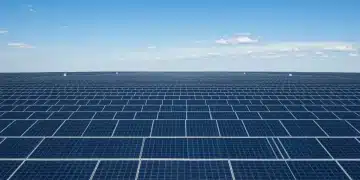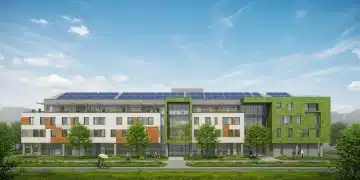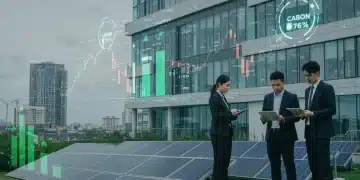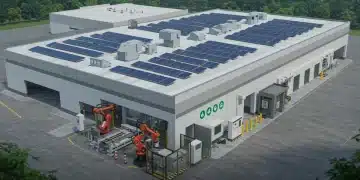Waste-to-Energy Solutions: Boosting US Power by 30% by 2025
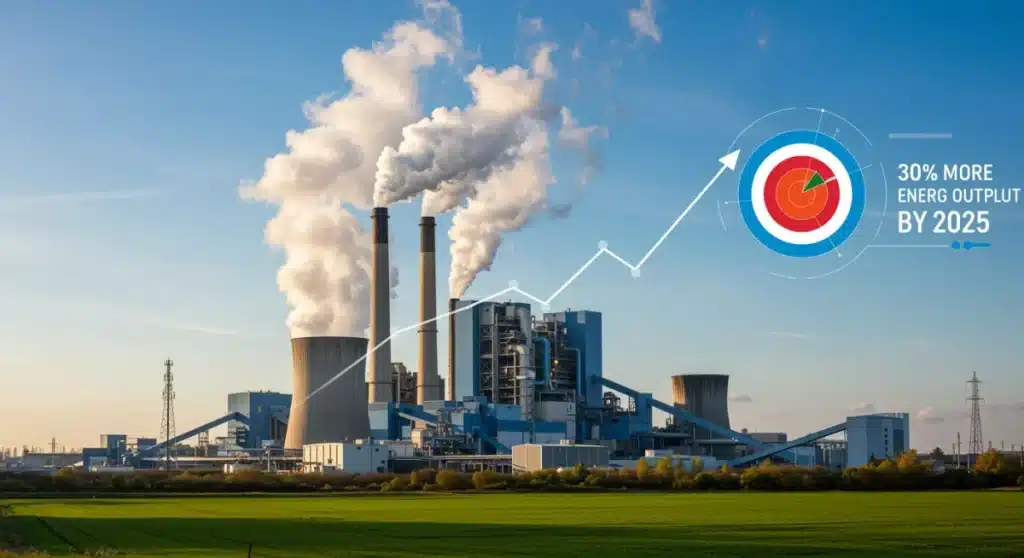
The U.S. is poised to significantly expand its reliance on Waste-to-Energy Solutions, aiming to convert 30% more municipal waste into electricity by 2025, marking a critical step towards sustainable waste management and energy independence.
Waste-to-Energy Solutions: Converting 30% More Municipal Waste into Power Across the U.S. by 2025
Breaking news reveals a significant push for Waste-to-Energy Solutions, with ambitious targets set to convert 30% more municipal waste into power across the U.S. by 2025. This initiative represents a pivotal shift in how the nation addresses both its growing waste crisis and its energy demands, promising substantial environmental and economic benefits.
The Urgent Need for Waste-to-Energy Expansion
The United States faces escalating challenges in managing municipal solid waste (MSW) and meeting its energy needs sustainably. Traditional landfilling contributes to greenhouse gas emissions and depletes valuable land resources. As of late, reports indicate a renewed focus on innovative approaches to mitigate these issues.
This renewed push towards waste-to-energy (WtE) technologies is driven by several factors, including increasingly stringent environmental regulations, a desire to reduce reliance on fossil fuels, and the economic opportunities presented by converting waste into a valuable resource. The goal of processing 30% more waste by 2025 underscores a national commitment to a more circular economy.
Mounting Waste Crisis
Each year, Americans generate an astounding amount of waste, much of which still ends up in landfills. Landfills are not only environmental liabilities but also a missed opportunity for resource recovery.
- Approximately 292.4 million tons of MSW were generated in the U.S. in 2018, with about 50% landfilled.
- Landfills are major sources of methane, a potent greenhouse gas.
- The lifespan of existing landfills is shrinking, prompting the need for alternatives.
Energy Security and Sustainability Goals
Beyond waste management, the U.S. is striving to bolster its energy security and reduce its carbon footprint. WtE facilities offer a dual benefit, providing a reliable, baseload power source while diverting waste from landfills.
Current Landscape of Waste-to-Energy in the U.S.
Currently, the U.S. operates a number of WtE facilities, primarily utilizing combustion technology to generate electricity. These facilities play a crucial role in managing waste in specific regions, but their overall capacity has remained relatively stagnant for years. Recent policy discussions and technological advancements are now poised to change this trajectory.
Existing WtE plants process a fraction of the nation’s total waste, but they demonstrate the viability and effectiveness of the technology. These operations often integrate pollution control systems to minimize environmental impact, adhering to strict federal and state emission standards.
Technological Advancements and Efficiency
Modern WtE facilities are far more efficient and environmentally friendly than their predecessors. Innovations in combustion technology, gasification, and plasma arc processes are enhancing energy recovery and reducing emissions.
- Improved combustion control systems maximize energy extraction.
- Advanced air pollution control technologies capture and neutralize pollutants.
- Emerging technologies like gasification offer cleaner conversion processes.
Economic Impact and Job Creation
The expansion of the WtE sector is expected to stimulate economic growth, creating jobs in construction, operations, and maintenance. These facilities represent significant infrastructure investments in local communities.
Strategies to Achieve the 30% Increase by 2025
Achieving a 30% increase in municipal waste conversion to energy by 2025 requires a multi-faceted approach involving policy support, technological investment, and public engagement. Key stakeholders, including federal and state governments, private industry, and local communities, must collaborate to overcome existing barriers and accelerate deployment.
One of the primary strategies involves streamlining the permitting process for new WtE facilities and expanding existing ones. This includes addressing public concerns through transparent communication and demonstrating the environmental benefits of modern WtE technologies. Financial incentives and grants are also critical to attract the necessary capital investment.
Policy and Regulatory Frameworks
Supportive policies are essential to incentivize the development and adoption of WtE technologies. This includes recognizing WtE as a renewable energy source and incorporating it into state renewable portfolio standards.
- Federal grants and tax credits for WtE projects.
- State-level mandates for waste diversion and energy recovery.
- Streamlined environmental impact assessment processes.
Investment in Infrastructure and Research
Significant capital investment is needed to build new facilities and upgrade existing ones. Furthermore, continued research and development will drive technological innovation, making WtE processes even more efficient and sustainable.
Environmental Benefits and Challenges
The environmental benefits of expanding Waste-to-Energy Solutions are substantial, primarily through landfill diversion and greenhouse gas reduction. However, the technology also faces scrutiny regarding its environmental footprint, particularly concerning air emissions. Addressing these challenges is paramount for widespread acceptance and deployment.
Modern WtE plants significantly reduce the volume of waste sent to landfills, conserving land and reducing methane emissions. By generating electricity from waste, they also offset the need for fossil fuel-based power generation, contributing to a lower carbon economy. Advanced pollution control systems are designed to capture a wide range of pollutants, ensuring compliance with strict air quality standards.
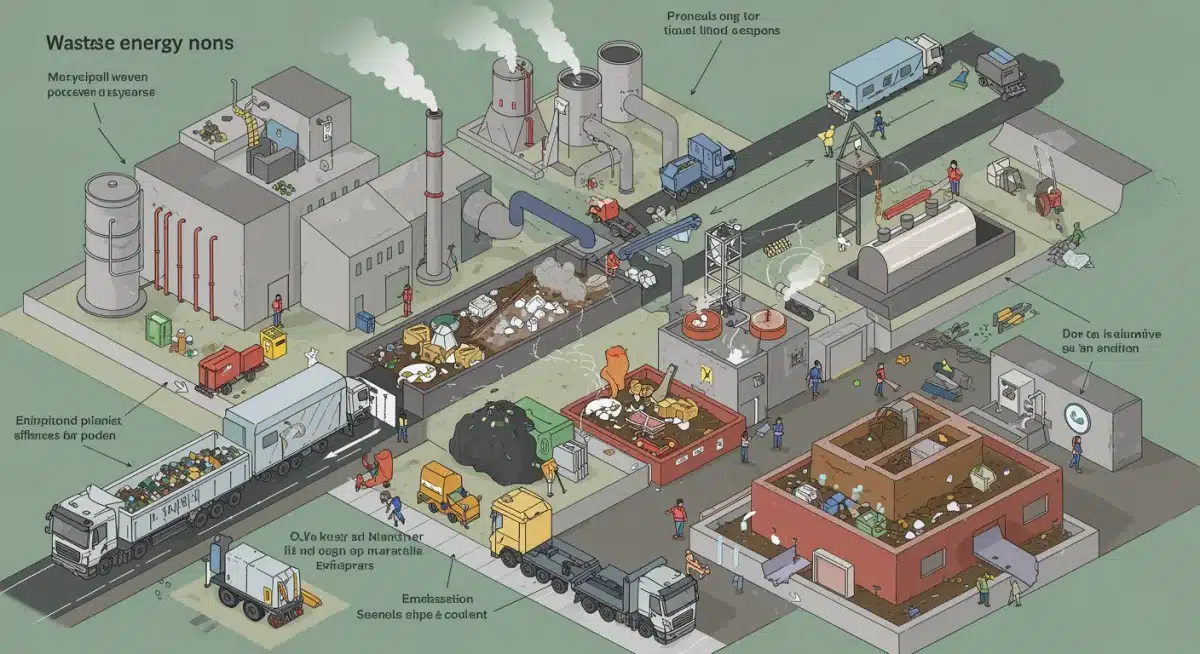
Reducing Greenhouse Gas Emissions
Diverting waste from landfills is one of the most effective ways to reduce methane emissions, a greenhouse gas far more potent than carbon dioxide in the short term. WtE facilities transform this waste into energy, further reducing carbon intensity.
Air Quality Concerns and Solutions
Despite advancements, public perception often links WtE to historical incineration technologies with poor environmental records. Modern facilities employ sophisticated pollution control equipment to manage emissions effectively.
- Continuous Emission Monitoring Systems (CEMS) ensure real-time compliance.
- Baghouses and scrubbers remove particulate matter and acidic gases.
- Strict regulatory oversight ensures environmental protection.
Economic Advantages and Community Impact
Beyond environmental benefits, the expansion of Waste-to-Energy Solutions offers significant economic advantages and positive community impacts. These include job creation, local revenue generation, and enhanced waste management infrastructure, contributing to local self-sufficiency and resilience.
WtE facilities create stable, high-paying jobs, from construction and engineering to operations and maintenance. They also provide a reliable energy source that can reduce a community’s reliance on external energy markets, offering greater price stability. Furthermore, by processing waste locally, transportation costs and associated emissions are reduced.
Job Creation and Local Economy
The development and operation of WtE plants drive local economic activity, providing employment opportunities and supporting local businesses. This economic injection can revitalize communities and foster sustainable growth.
Revenue Generation and Energy Independence
WtE facilities can generate revenue through electricity sales and tipping fees, which can be reinvested into community services or used to stabilize local taxes. They also contribute to energy independence by utilizing a domestic and continuous fuel source.
Case Studies and Future Outlook
Several U.S. cities and counties have successfully implemented Waste-to-Energy Solutions, demonstrating their viability and benefits. These case studies provide valuable insights and blueprints for future projects, paving the way for the ambitious 30% increase target by 2025. The future outlook for WtE in the U.S. appears promising, with ongoing innovations and increasing recognition of its role in a sustainable future.
For example, facilities in states like Florida, Connecticut, and Massachusetts have been operating for decades, providing reliable waste management and energy generation. These successes highlight the potential for broader adoption, particularly as technology continues to improve and environmental regulations become more stringent. The focus is now on scaling these successful models nationwide.
Successful Implementations
- Hillsborough County, Florida: Operates a large WtE facility processing hundreds of thousands of tons of waste annually.
- Saugus, Massachusetts: Home to one of the oldest and most continuously operating WtE plants in the U.S.
- Hartford, Connecticut: Utilizes WtE to manage a significant portion of the state’s municipal waste.
Innovations Driving Future Growth
Ongoing research into advanced gasification, pyrolysis, and anaerobic digestion technologies promises even cleaner and more efficient waste-to-energy conversion, further enhancing the appeal of WtE as a sustainable solution.
| Key Aspect | Brief Description |
|---|---|
| Target by 2025 | Convert 30% more municipal waste into power across the U.S. |
| Primary Benefit | Reduces landfill dependency and generates renewable energy. |
| Key Technologies | Combustion, gasification, and advanced pollution control systems. |
| Economic Impact | Job creation, local revenue, and energy independence. |
Frequently Asked Questions About Waste-to-Energy
Waste-to-Energy (WtE) Solutions involve processes that convert non-recyclable municipal solid waste into usable forms of energy, such as electricity or heat. This helps reduce landfill volume and provides a renewable energy source, contributing to sustainable waste management practices.
The U.S. plans to achieve this increase through a combination of policy support, investment in new and existing facilities, and technological advancements. Streamlining permitting, offering financial incentives, and public-private partnerships are key strategies to meet the 2025 target.
Modern WtE facilities are equipped with advanced pollution control systems that meet stringent environmental regulations. They significantly reduce landfill waste and methane emissions, and their air emissions are continuously monitored to ensure compliance and minimize environmental impact.
WtE plants primarily process municipal solid waste (MSW) that cannot be recycled or composted. This includes household trash, non-hazardous commercial waste, and certain industrial wastes. The goal is to maximize resource recovery before waste is sent for energy conversion.
Expanding WtE offers numerous economic benefits, including job creation in construction and operations, local revenue generation from energy sales and tipping fees, and enhanced energy independence. These facilities represent significant long-term investments in local economies.
What This Means
The ambitious goal of converting 30% more municipal waste into power across the U.S. by 2025 signals a transformative period for both waste management and energy production. This initiative reflects a growing national consensus on the urgency of sustainable practices, moving beyond traditional disposal methods towards a more integrated approach that views waste as a valuable resource. The success of this endeavor will depend on continued political will, public support, and sustained investment in advanced WtE technologies. As these solutions expand, communities can anticipate cleaner environments, reduced landfill burdens, and a more resilient energy infrastructure, marking a significant step towards a circular economy and a greener future for the nation.
